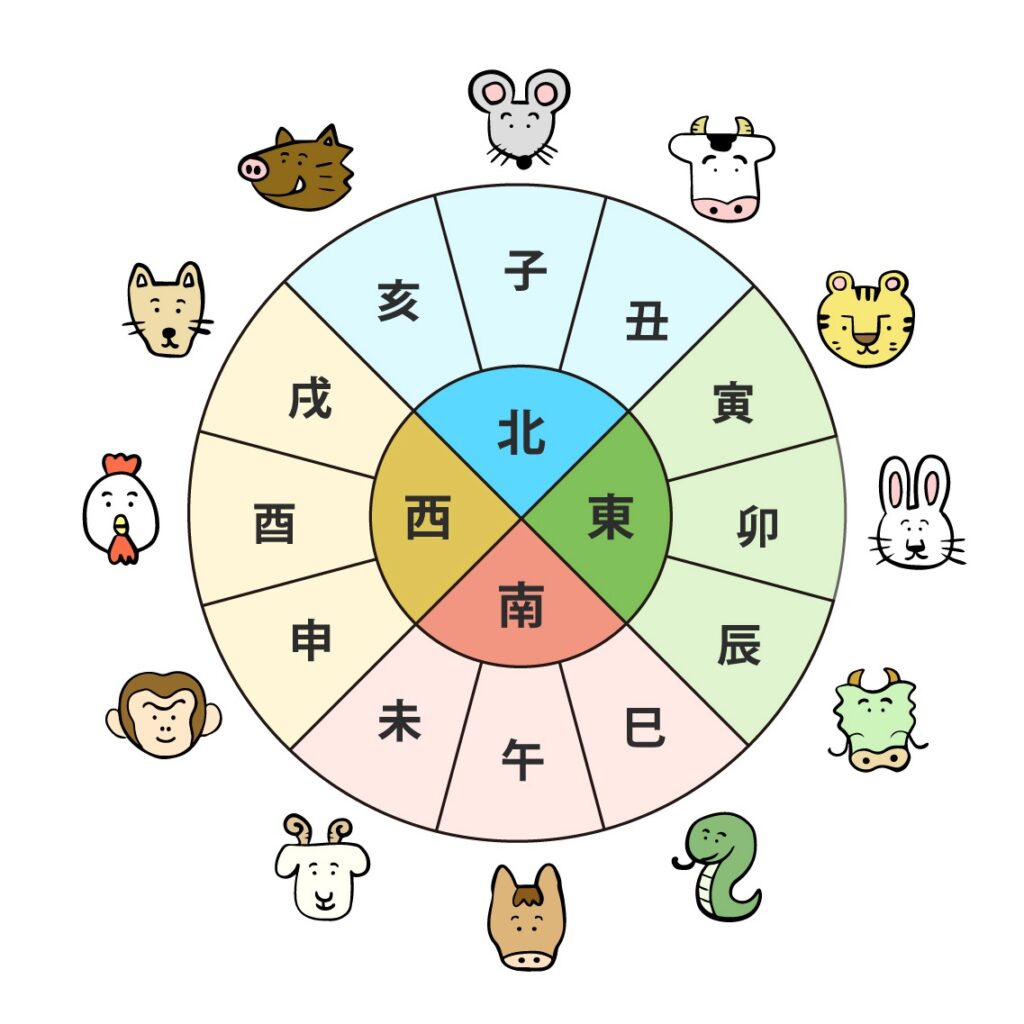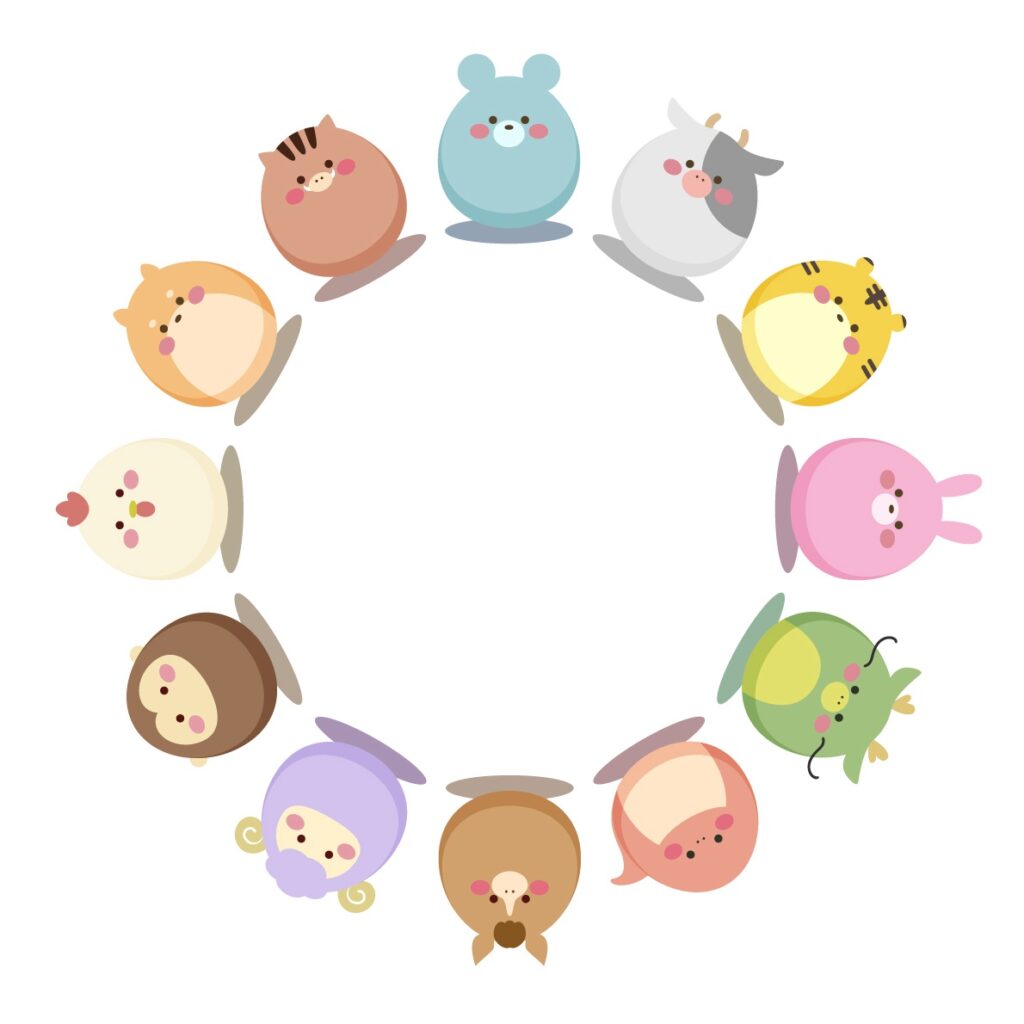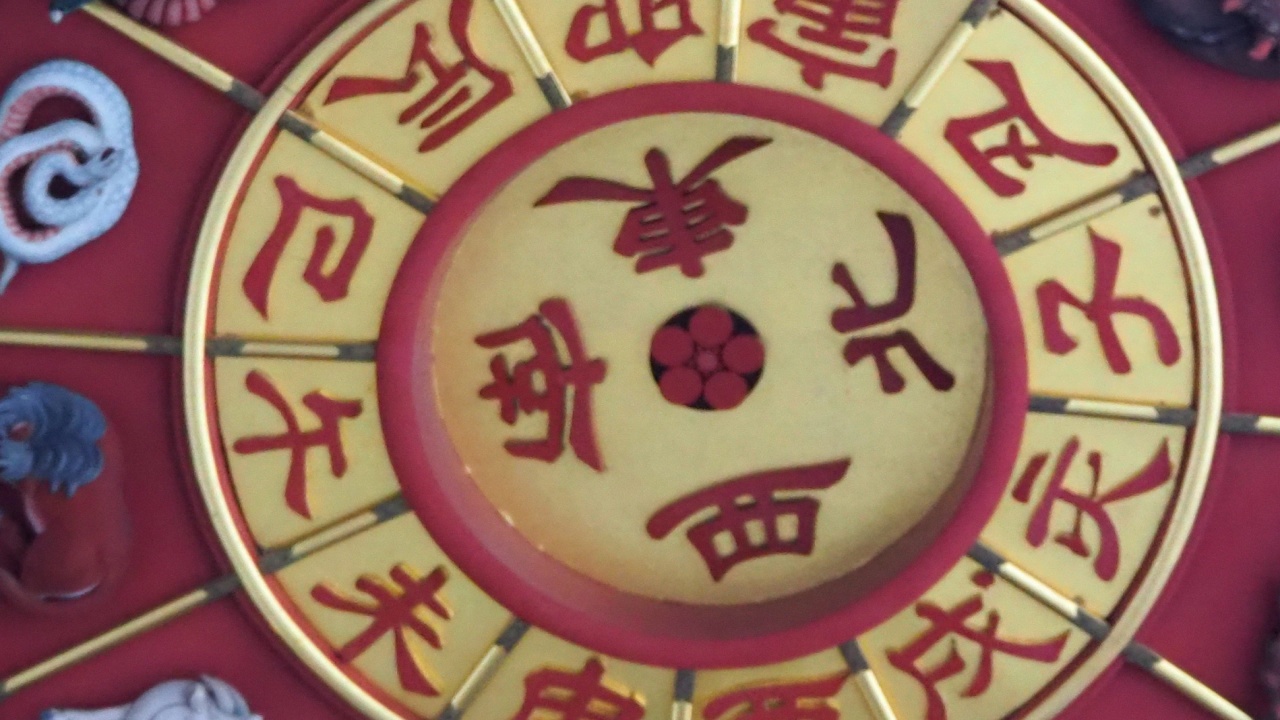十干(じっかん)/Jikkan
もともとは「陰陽五行(いんようごぎょう)」のエネルギーを言語化するために用いた数詞(≒単位)
※読み(音読み・片仮名・訓読み)によって意味と解釈が変わる
A number word (≒ unit) originally used to verbalize the energy of “Yin-Yang Five Elements”
※The meaning and interpretation change depending on the reading (On reading, Katakana, Kun reading)
十二支(じゅうにし)/Twelve animals of the zodiac
もともとは「生命エネルギーの循環」を言語化するために使用されたもの
多くの思想に取り込まれ、意味と目的が多様化
※読み(音読み・片仮名・訓読み)によって意味と解釈が変わる
Originally used to verbalize “cycle of life energy”
Incorporated into many ideas, meaning and purpose diversify
※The meaning and interpretation change depending on the reading (On reading, Katakana, Kun reading)
干支(かんし/えと)/Japanese Zodiac signs
十干(じっかん)と十二支(じゅうにし)の2つの異なる方式を統合
調整を重ね、暦として適合させた
Integration of two different systems: 10 zodiac signs and 12 zodiac signs
After repeated adjustments, it was adapted as a calendar.
参考資料など
こよみナビゲーター養成講座(2023年開催)
「大吉日大全」藤本宏人 著



干支とは?
干支(えと)は、十干(じっかん)と十二支(じゅうにし)の組み合わせです。
十干はもともと、甲、乙、丙、丁…と、日を順に10日のまとまりで数えるための呼び名(符号)でした。10日ごとに、「一旬(いちじゅん)」と呼び、3つの旬(上旬、中旬、下旬)で1ヶ月になるため、広く使われていました。
古代中国では、万物はすべて「陰」と「陽」の2つの要素に分けられるとする「陰陽説(いんようせつ)」と、すべて「木」、「火」、「土」、「金」、「水」の5つの要素からなるとする「五行説(ごぎょうせつ)」という思想がありました。これらを組み合わせて「陰陽五行説」といい、やがて陰陽五行説を「十干」に当てはめるようになりました。また、日本では、この「陰」と「陽」を「兄(え)」と「弟(と)」に見たて、「兄弟(えと)」と呼ぶようになりました。
十二支は、もともと12ヶ月の順を表わす呼び名でしたが、やがてこれらに12種の動物を当てはめるようになったものです。
暦の中のことば「六十干支(ろくじっかんし)」
The zodiac signs are a combination of the ten signs of the zodiac and the twelve signs of the zodiac.
Jikkan was originally a name (symbol) used to count days in groups of 10, such as Ko, Otsu, Hei, Tei, etc. Every 10 days is called “Ichijun,” and it was widely used because three seasons (early, mid, and late) make up one month.
In ancient China, the “Yin-Yang Theory” held that all things can be divided into two elements: “Yin” and “Yang’’. And everything was composed these five elements “Wood”, “Fire”, “Earth”, “Metal’” that idea called the “Gogyosetsu Theory”
Combining these theories is called the “Yin-Yang, Five-Element Theory,” and eventually the Yin-Yang, Five-Element Theory came to be applied to the Jikkan(十干)
Additionally, in Japan, these “yin” and “yang” are seen as “e(兄)’’ and “to(弟)’’ and they are now called “brothers” (eto 兄弟).
The zodiac was originally a name representing the order of the 12 months, but over time the zodiac came to be applied to the 12 species of animals.

